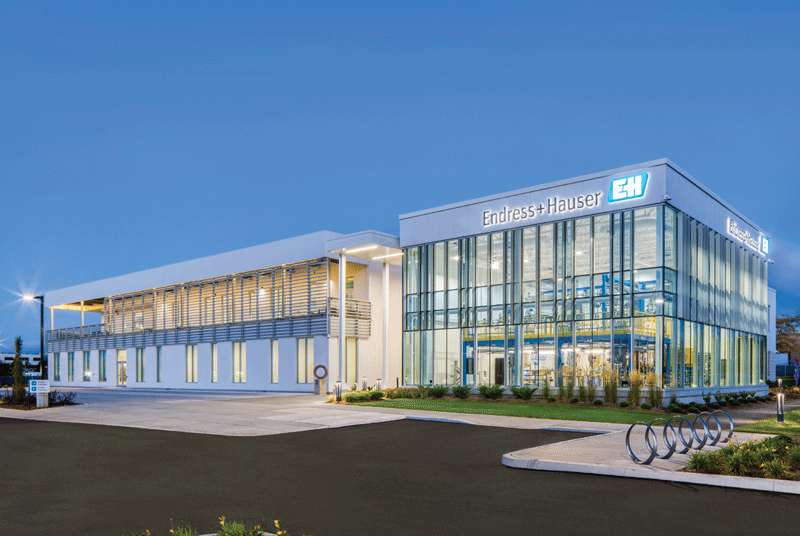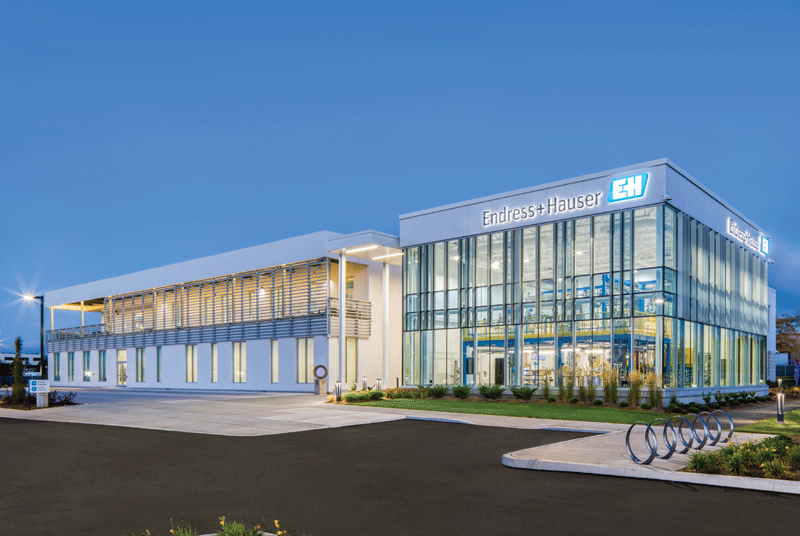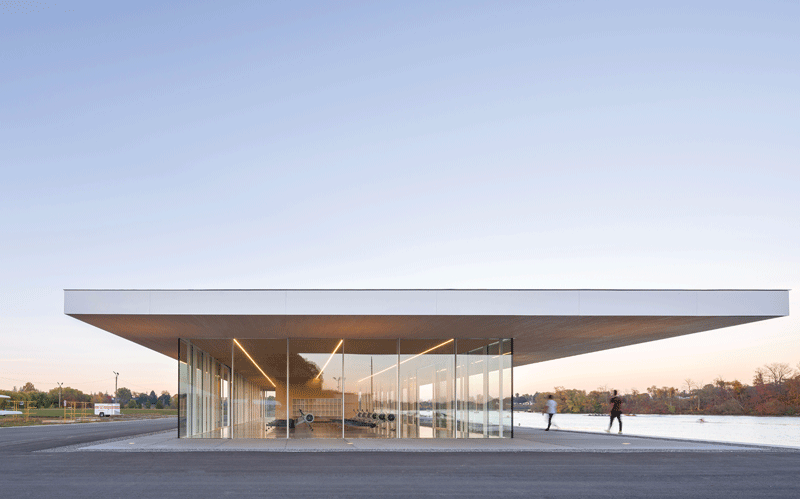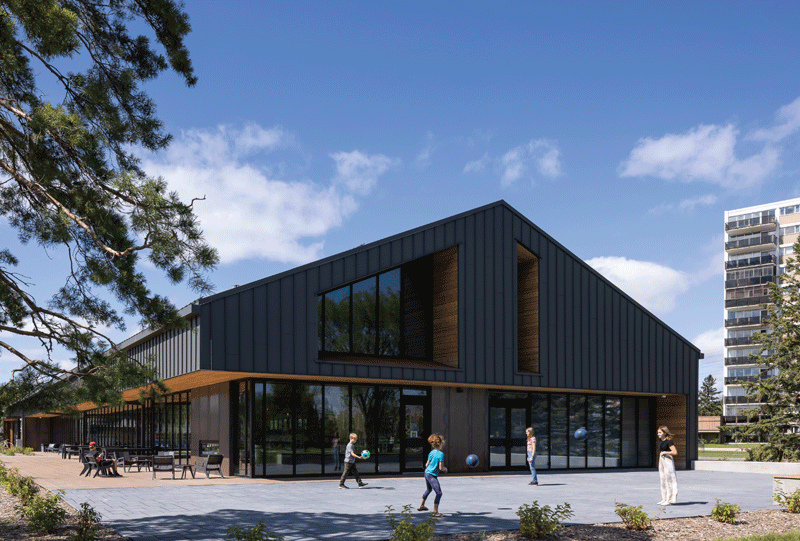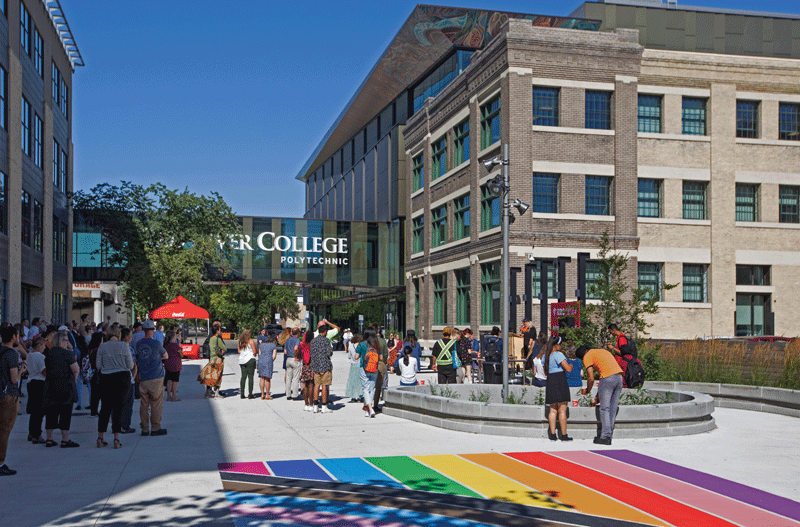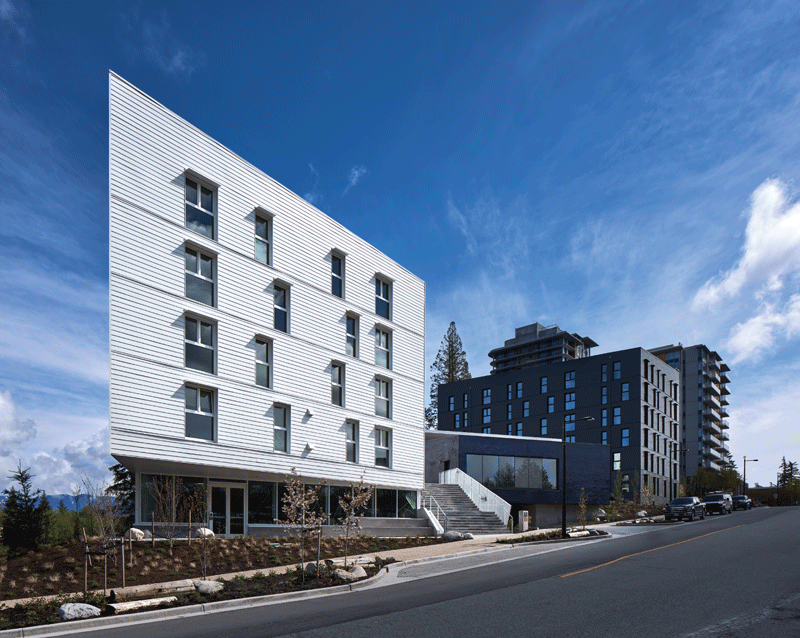
SFU Affordable Housing, Burnaby, BC
Jury Comment: “Providing much needed affordable accommodation for previously under-served sectors of the student population, this project is notable for its strong community focus, the multiple opportunities it creates for interaction between residents, and its strong connection with nature. Attention to detail and comprehensive data supported impressive energy performance.”
Simon Fraser University (SFU) Affordable Housing is a high-performance, community-oriented housing project that strives to promote connection—people to one another, students to university, residents to neighbourhood, and everyone to nature.
Located near a daycare and elementary school in the UniverCity neighbourhood at SFU’s Burnaby campus, the project provides 90 below-market student rental apartments that prioritize underserved communities with accessible, adaptable, and family-oriented housing—demographics with modest incomes and limited access to transportation, amenities, and community support.
Consisting of two wood-frame buildings of four and six storeys on top of a single-storey parkade, the residences are supported by a blend of amenities to cultivate community connections including a courtyard and playground, multipurpose pavilion, shared laundries and study rooms, and a bicycle workshop to support active transportation.
Utilizing simple massing with a high-performance envelope and rigorous attention to detailing along with PHPP and THERM modelling, the project surpassed Step 4 of the BC Energy Step Code and was recognized as a Clean Net-Zero Energy Ready award winner. Completed in 2022 on a conventional wood-frame construction budget, the project continues to be leveraged as a case study for local industry and academia in the design and construction of high-performance buildings.
The project started with a complex site and client challenge to deliver Passive House performance on a conventional construction budget while prioritizing community and occupant well-being. Certification was an initial goal, but was relatively new to the market when the project was initiated in 2014, leading to disproportionately large cost premiums and constraints.
Project Credits
- Architect Local Practice Architecture + Design
- Project Manager JLL
- Owner/Developer SFU Community Trust
- General Contractor Peak Construction Group
- Landscape Architect space2place
- Civil Engineer H.Y. Engineering
- Electrical Engineer and Structural Engineer Associated Engineering
- Mechanical Engineer Rocky Point Engineering
- Fire Protection Mfpe Engineering
- Building Envelope RDH Buiding Science
- Energy Model Tandem Architecture Écologique
- Building Code Jensen Hughes
- Cost & Constructability Heatherbrae Builders
- Photos Latreille Photography
Project Performance
- Energy Intensity 49.82 KWhr/m2/year
- Reduction in Energy Intensity 62% (Based on BCBC – 2012 Energy Step Code Level 2*)
- Water Consumption from municipal source 67,262 litres/occupant/year
- Reduction in Water Consumption 11%
- Construction materials diverted from landfill 66%
SUBSCRIBE TO THE DIGITAL OR PRINT ISSUE OF SABMAGAZINE FOR THE FULL VERSION OF THIS ARTICLE.

